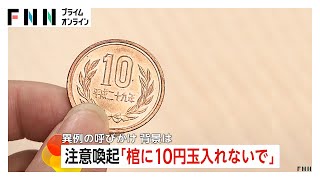As part of funerary traditions, flowers and personal mementos are often placed in the coffin as final offerings to the deceased. However, the city is now cautioning that certain items—especially metals—are increasingly being included despite restrictions. This trend is creating problems as the number of cremations rises with an aging population.
Kenichi Fujita of Sapporo’s Health and Welfare Bureau explained, “As cremation numbers continue to increase, the impact of such items can no longer be ignored.” Crematoria operators report that metals, particularly 10 yen coins, are causing significant difficulties.
Osamu Tsumaki, manager of the Yamaguchi Crematorium in Sapporo, noted that the coins melt during cremation, sticking to the bed of the furnace and causing wear. “It damages the cremation equipment and reduces its durability, forcing more frequent replacements,” he said. In addition to altering the color of the bones, the melted coins adhere stubbornly to furnace surfaces, making removal difficult.
The practice of placing coins in coffins is rooted in local customs. Residents explained that coins are placed as a symbolic fare for crossing the River Sanzu, the mythological river separating life from the afterlife. Others said they kept surviving coins as protective charms after cremation.
“When my parent died, we placed 10 yen coins. It was considered a kind of amulet,” one resident said.
Although the city has long posted notices at government counters warning against such practices, it has now produced illustrated flyers to raise broader awareness. Officials are asking for public cooperation to ensure safe and smooth cremation.
https://newsonjapan.com/article/147008.php


